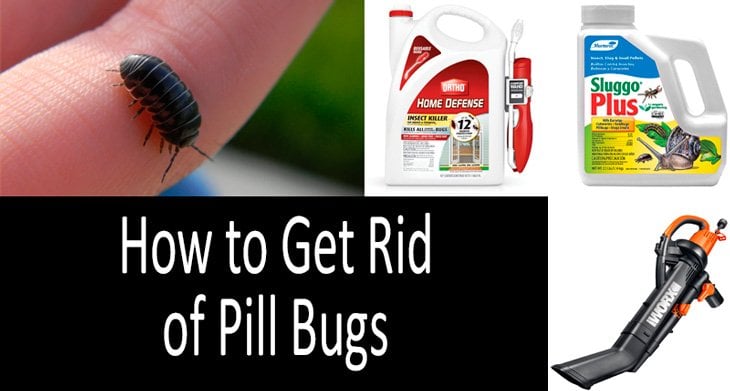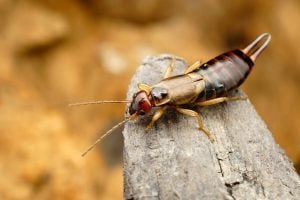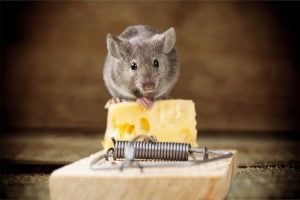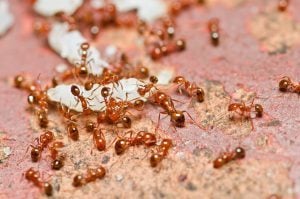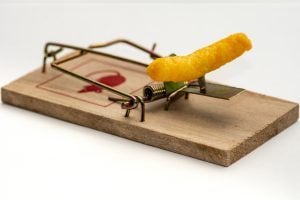How to get rid of pill bugs? If these critters are feeding on live plants in your garden or invading your house, it is high time to take the following measures.
|
1. WORX WG505 3-in-1 Blower/Mulcher/Vacuum |
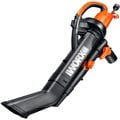 Check the current price |
|
2. Monterey LG6570 Sluggo Plus Slug Killer |
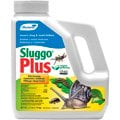 Check the current price |
|
3. Ortho Home Defense Insect Killer for Indoor & Perimeter |
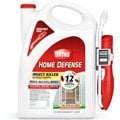 Check the current price |
These little creatures can be a sheer amusement and a nice toy for your kids. When threatened, they roll up into a ball and are fun to play with. More importantly, pill bugs, scientifically known as Armadillidium vulgare, are unique as they are the only crustaceans that dwell on the land. They still prefer moist environments to live in but, unlike other crustaceans, will die if submerged in water. These bugs are a sort of mild natural dehumidifier, acting like a sponge that absorbs moisture from the air. And yes, they are beneficial. Pill bugs can make your garden healthier because of their ability to absorb heavy metal ions from the soil. They can live in contaminated soil and feed on decaying organic materials like leaf litter. So why should you get rid of pill bugs if they are so beneficial?
Normally, pill bugs are not a problem for homeowners. It is when their populations dramatically increase in numbers that they may cause some damage. At some point, there will not be enough decaying material for them to eat and they will turn to your garden and consume your live plants. Another problem associated with pill bugs is that they can be nuisance pest invading your house. Again, this happens only when they significantly grow in numbers.
How to Get Rid of Pill Bugs in the Garden
There are few things you can do to keep pill bugs away from your garden, ranging from preventive measures to insecticidal control.
Prevent pill bugs from damaging your crops
- Remove plant debris regularly and keep your garden well-maintained. Decaying leaves are their main food, therefore, a clean garden will look unattractive to them. When dealing with large amounts of this type of material, you can use a leaf vacuum.
We recommend the WORX WG505 3-in-1 Blower/Mulcher/Vacuum that combines three functions in one device. What is particularly good about this product is that you can easily switch between vacuuming, blowing, and mulching, without the need to stop and change parts of the tool. The vacuum will suck up to 14 gallons of leaves per minute while the impeller will mulch them at a ratio of 16:1. The blower is adjustable and can operate at a speed of up to 210 mph. With a weight of 9.5 pounds, the WORX WG505 is designed so that you can easily carry it with one hand.
- To get rid of pill bugs in a vegetable garden and protect your strawberry beds, you can make them hard-to-reach for these pests. Keep the fruits off the ground and place strawberry plants in narrow beds. Keep in mind that pill bugs tend to feed on those vegetables that grow directly on the damp soil.
- Water your plants early in the morning so that there is enough time for the soil to dry before the dusk. Since pill bugs are nocturnal, they are not active during the daytime.
- Eliminate potential shelters like plant debris, stones, bricks, and firewood. This is where they hide until the sun goes down. Actually, anything that sits on the ground can serve as a hiding place for them. If you cannot remove these objects, keep them off the ground and make sure there is airflow beneath them.
Apply insecticides to handle a severe pill bug infestation
Generally, insecticides are not recommended for pill bug control. But if you have a lot of them in the garden, here are some options suggested by scientists. Entomologist Michael Merchant from Texas AgriLife Extension Service claims that permethrin-based products are more effective than insecticides containing acephate or carbaryl. Since permethrin belongs to the pyrethroid family, other chemicals from this group, like cyfluthrin and lambda-cyhalothrin, can also be used.
The Control Solutions Inc 82004505 Permethrin SFR Termiticide/Insecticide is a potent solution labeled for a broad range of pests including pill bugs. Based on 36.8% permethrin, the concentrate provides a quick knockdown effect with a residue lasting up to three months. It should be applied outdoors, including areas around the house and ornamentals. Mix it with water at concentrations indicated on the label and use a spray bottle for application. Numerous buyers say that the product does kill pill bugs and is really powerful.
Meanwhile, scientists from the University of Idaho hold a different view. They advise using insecticide baits when feeding damage is severe, instead of treating plants with pesticides. Available in pellets and flakes, baits should be distributed on the soil surface around but not touching the plants. They kill only upon digestion, which is why this approach is considered to be more eco-friendly and safer for beneficial insects like bees. The experts recommend six proven insecticides, which are intended to kill not only pill bugs but also sowbugs, snails, and slugs.
According to the researchers, the safest option on the list is the Monterey LG6570 Sluggo Plus Slug Killer. Unlike other baits based on carbaryl, this product can be safely applied on the soil around almost all plants and vegetables, including broccoli, asparagus, cucumber, melon, peas, potatoes, spinach, tomatoes, and many more. The only exceptions are kale, kohlrabi, Chinese cabbage, collards, and celery. The insecticide is also used to get rid of pill bugs in potted plants.
The product’s active ingredients are spinosad and iron phosphate. While the latter kills slugs and snails, spinosad is effective against pill bugs as well. This is a registered pesticide containing a substance produced by soil-dwelling bacteria. While being natural, it is lethal to many insects. When consumed, spinosad disrupts their nervous system, causing paralysis and death within two days. This 2.5-pound container treats up to 5,000 square feet and remains effective for up to a month.
How to Get Rid of Pill Bugs Naturally
- The least toxic option is diatomaceous earth, a naturally occurring powder consisting of microscopic skeletons of algae, which are made up of silica. Diatomaceous earth acts as a potent yet safe insecticide and can be applied both indoors and outdoors. Silica kills insects by removing the outer coating from their exoskeleton and dehydrating them to death. PennState University scientists recommend using diatomaceous earth when a pillbug outbreak occurs, sprinkling the dust on floors and walkways. When choosing diatomaceous earth, make sure it is food-grade, otherwise, the product will not be effective as an insecticide.
The HARRIS Diatomaceous Earth offers a whopping 5 pounds of diatomaceous earth for about $17. The product is free of any fillers or additives and is OMRI listed. It includes a duster with an extension nozzle that will allow you to spread the insecticide more thoroughly and efficiently. The HARRIS Diatomaceous Earth is food-grade and made in the USA. The package reseals, which is important as the powder must be kept dry to be effective.
- Trapping is a bit more labor-consuming but an absolutely natural method of pill bug control. You can do that in two different ways. First, take some fresh fruits, like watermelon or orange, slice them, and distribute around the garden. Do it in the evening as pill bugs are active at night. In the morning, check your fruit traps. Pill bugs will congregate beneath these slices. All you will have to do is to remove them with a shovel or by handpicking. Alternatively, you can place several piles of decomposing leaves in different parts of the garden. This kind of waste will attract pill bugs like bait. Wait for about two or three days and then put these piles in garbage bags.
How to Get Rid of Pill Bugs in the House
Although they do not harm people or cause damage to furniture or foods, pill bugs invading your home might be a nuisance. The first thing you should understand is that these creatures can survive only in humid indoor environments. That is why they are seen mainly in bathrooms and damp basements. Here is what you can do to keep them away from your house.
- Proper Ventilation. Make sure that the crawl space and basement are ventilated well, removing excess moisture. Installing an appliance like the AC Infinity AIRTITAN T8, Crawlspace Basement Ventilator Fan is the best way to get rid of pill bugs in the basement. For less than $100, you will get a fan system made specifically for this type of space. Not only will it efficiently ventilate your crawl space, but it also provides accurate moisture control there as well. The device comes with a controller that can be programmed to automatically change fan speeds depending on the temperature and humidity levels. The latter ones can be checked on an LCD screen with smart dehumidistat and thermostat control. Made with a robust stainless steel frame, the unit has an IP44 rating, meaning it is water- and dust-resistant.
- Block Entry Points. Inspect the foundation of the outside wall, looking for any cracks and openings. Pay separate attention to vents and door thresholds. This is how pill bugs penetrate into your house. The Great Stuff 99112809 Smart Dispenser Pestblock was created specifically to block pest entry points. By pulling the trigger, you can adjust the bead size up to 1 inch. Apply the product to cracks and crevices to form a long-lasting barrier against any species of insects. The substance is grey in color and will fit in any interior. More importantly, it is waterproof, so you can safely use the Pestblock to get rid of pill bugs in the bathroom.
- Apply insecticides to the house foundation, creating an insect barrier outsides. Spraying indoors is of little use and you should stop the enemy at the gates. But keep in mind that without removing their hiding places outdoors and sealing entry points in the building, insecticides will not be effective. This is particularly true for garages and hangars. Choose products that are formulated for home perimeter treatment and are based on bifenthrin, carbaryl, permethrin, cypermethrin, or deltamethrin.
For example, the Ortho Home Defense Insect Killer for Indoor & Perimeter provides long-lasting control and is effective against a wide range of pests. The insecticide is based on two active ingredients, bifenthrin and zeta-cypermethrin, that kill insects by contact. These chemicals act on the insect’s central nervous system, eventually immobilizing it. Use the product to create a bug barrier that will keep pests away for up to one year. The 1.1-gallon solution comes with a reusable wand for easy application.
Rules for Pill Bug Control: Effectiveness Based on Scientific Evidence
Most scientists claim that insecticides should not be applied indoors unless there is a severe infestation. Michael F. Potter, entomologist from the University of Kentucky says that there is no sense in treating baseboards and other areas inside the house with insecticides because pill bugs typically die quickly indoors from dehydration. The only condition for their survival in your house is to find places with enough moisture. Meanwhile, when dealing with large amounts of these creatures, outdoor insecticide treatment may be of help. In this case, Dr. Potter suggests spraying the bottom of doors, around vents and crawl space entry points, and along walls to prevent bugs from getting inside the building.
His colleague, entomologist Phillip E. Sloderbeck from Kansas State University mentions carbaryl, bifenthrin, cypermethrin, deltamethrin, lambda-cyhalothrin, and permethrin as ingredients recommended for pill bug control. He notes that spraying directly on bugs is likely to provide an immediate knockdown effect but is not effective in the long run.
Instead, he recommends treating cracks and wall voids with insecticides, focusing on dark and damp spaces. Spray steps and porches as well as sidewalks and areas around dense vegetation to eliminate them outside the house. The bug barrier around the house should be 5 to 10 feet wide. Make sure you apply insecticides thoroughly and directly to the soil. If there are boards, mulch, or leaf litter, remove them before treatment.
Expert Opinion: Jennifer Sternberg, Staff Scientist, Flinn Scientific
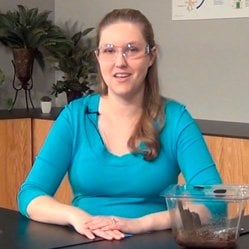
Jennifer Sternberg, Staff Scientist, Flinn Scientific
Jennifer Sternberg is a staff scientist at Flinn Scientific, which is a leading supplier of scientific equipment in the educational market. In this video, Jennifer explains why pill bugs not always prefer dark places.
A classic animal behavior lab investigates whether pill bugs exhibit positive or negative phototaxis. Basically, whether they move towards or away from light. Pill bugs should exhibit negative phototaxis, meaning they move away from light. But sometimes these arthropods move toward the light. Why do they do this and how can you explain this atypical behavior? Well, there are two possible explanations. The first is that pill bugs have a hierarchy of behaviors. Positive hydrotaxis that is moving toward water will outrank phototaxis. So if the overall environment is too dry, these critters will move toward a moist area, whether it is light or dark. The second explanation involves a viral infection (do not worry, they are still safe to use). There is a bird virus that uses these little creatures as a vector or, in other words, as a means to an end. Pill bugs may acquire the virus when they travel through infected bird waste. The virus then alters the pill bugs’ behavior, causing them to move toward the light. When an unsuspecting bird consumes an infected pill bug, the cycle is complete and the virus is back inside the preferred host.

